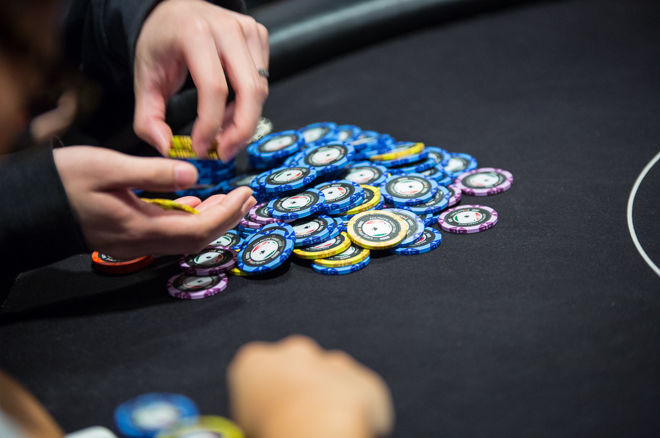Leveraging Poker Rules to Your Advantage

The rules of poker aren't that complicated, at least for most variants. Texas hold'em, they say, takes only a few minutes to learn (and a lifetime to master). It's true that when it comes to classic poker rules like hand rankings, the order of play, the procedures for betting and other basics, most are able to get a handle on the game relatively quickly.
Of course, learning the rules is only the beginning. Once you have a good grasp on the rules for playing the game, the next step is to figure out how best to play within those rules in order to maximize your chance of success. And the fact is, simply understanding the rules more thoroughly than your opponents do can give you a meaningful edge against them.
We're not talking about "angle-shooting" or similarly questionable actions that aren't ethical or that violate established norms of etiquette at the poker table. Rather, we're simply referring to applying your knowledge of basic poker rules in a way that maximizes your advantage. Here are a few examples.
Understanding Betting Limits
In no-limit poker games, players are allowed to bet as much as they like whenever the action is on them, right up to going "all in" and committing their entire stack. However there are actually a couple of instances where bets are "limited" in no-limit games, both having to do with what is the minimum amount a player is able to bet.
In no-limit games, players must bet at least the amount of the big blind. Also, if another player has bet, a player wishing to raise must raise at least as much as the original bet. For example, if a player bets $20, a player wanting to raise must bet at least $40 to do so. Those rules governing betting are fairly standard.
Where some players run into questions comes when someone wants to make an additional reraise �� what is the minimum then?
According to the Poker TDA rules, a minimum raise must be "at least the largest bet or raise of the current round." That means if one player bets $20 and a second player raises to $60, if a third player wants to reraise the minimum bet would be $100 total �� that is, a raise of at least $40 (the largest bet or raise of the current round).
Knowing this rule could be very important to a player who (for example) has a very strong hand �� say, the unbeatable nuts �� and wishes not to reraise too much and scare others out of the pot. A minimum reraise is what the player wants to make, but if the player is mistaken about what exactly constitutes a minimum reraise, he might accidentally bet more than he needs to in this situation.
There are other particulars having to do with betting limits that are worth knowing, especially for those playing fixed-limit games or pot-limit games where there are upper limits, too, on how much a player can bet.
Understanding Relative Position
Most new poker players quickly learn the value of position and how playing from late position (e.g., the cutoff seat or the button) is generally more profitable than playing from early position (e.g., the blinds or under the gun).
As covered in "10 Hold'em Tips: The Importance of Position," acting last enables you to see more free cards, exert more pot control, find more bluffing opportunities, assess pot odds more accurately when acting and have the informational advantage of knowing your opponent's action before you have to act.
Having position also means being able to avoid "Five Common Mistakes When Playing from Out of Position," including playing too many hands, calling too many three-bets, playing too passively, and check-raising too little or too much.
That said, players should also understand the importance of relative position in a given hand in multi-way pots involving three or more players. Here is an example of leveraging the rules to your advantage, in this case knowing how the betting action works and where and when a bet can "close" the action on a given street.
"Relative position" refers to your position relative to the original raiser or aggressor in a hand. Say you are on the button and are dealt 8?7?. A player limps from under the gun, the next one over calls, then the cutoff raises.
Having the button �� and thus "absolute" position on everyone �� you might be tempted to call here with your suited connectors. However you know that after the flop it is very likely the action will be checked to the raiser sitting on your right in the cutoff who will continuation bet. Thus your "relative position" is going to be poor postflop, since you'll have to respond to the c-bet without knowing what the limpers in early position might do.
By contrast, say you were the last caller preflop before that cutoff raise. Your absolute position is poor, but your relative position postflop will be good given that the (likely) continuation bet on the flop will be coming from the player acting right after you. You might be more encouraged to stick around before the flop with your 8?7?, knowing that you'll have relative position on the others postflop. Simply knowing the order of play and rules governing betting helps you anticipate this situation and thus form your strategy.
Understanding Rules Governing Hand-for-Hand Play in Tournaments
Another more specific situation that comes up in multi-table tournaments concerns how "hand-for-hand" play works when the money bubble has drawn near. Depending on the tournament, hand-for-hand play might begin a few spots shy of the cash, or it might not start until the tournament is just a single elimination away from making the money.
Playing "hand-for-hand" means that every remaining table must complete one hand before moving on to the next one. Thus will tournament directors hold up the action at tables that complete hands early in order for all tables to get through the requisite hand. That means, of course, that players with short stacks gain less benefit from acting slowly or outright stalling in the hopes of waiting for someone else to bust before them.
There are more specific rules regarding hand-for-hand play worth knowing. Say the tournament is one spot away from the money. If two or more players bust at separate tables on the next hand, the eliminated players will divide the prize money due to the first eliminated player making the money (i.e., they'll split a "min-cash"). However, if two players at the same table are eliminated on the same hand, the player with more chips to start the hand will finish higher �� in this case, that player will cash while the player with shorter stack will not. Knowing that rule might affect your decision when getting involved during hand-for-hand play.
There's another situation related to hand-for-hand play worth being aware of �� what happens when the tournament reaches the end of the level without the bubble bursting and with hand-for-hand play being in effect. In some cases (such as at the World Series of Poker), "one additional time level will be added with the same limits as the expired level" �� that is, the blinds and antes won't go up just yet, and if the tournament gets through an entire additional level without the bubble bursting, then the limits will go up.
However at other venues and in other tournament series the levels continue to go up as usual during hand-for hand play. If you're a short stack during this crucial period of a tournament �� or even if you aren't �� knowing the rule for your particular tournament can be greatly beneficial when deciding on your strategy.
Conclusion
There are other, more specific rules you can use to your advantage. In many cases, simply knowing the rules can help you avoid making mistakes or running into problems that could well affect those who don't know the rules.
Knowing for instance the importance of protecting your hand with a card protector or chip can help you avoid having hands mucked accidentally by inattentive dealers. The player who isn't protecting his cards adequately exposes himself to just such an eventuality, and when his hand gets mucked he'll have no recourse since the rules dictate he must protect his own hand.
Knowing the rule against "string betting" �� that is, trying to make a bet or raise with multiple chip movements when the rule requires bets be made in a single motion �� can also help you avoid making a betting mistake that the player unaware of the rule might make.
Having a good grasp of other rules like the one requiring players to be at their seat when the last card is dealt in order to have a live hand, ones governing verbal declarations and acting in turn, and others having to do with non-standard situations like misdeals and accidentally exposing cards can all help a player as well.
Information is power in all poker games, and knowing the rules is another part of that information game.








